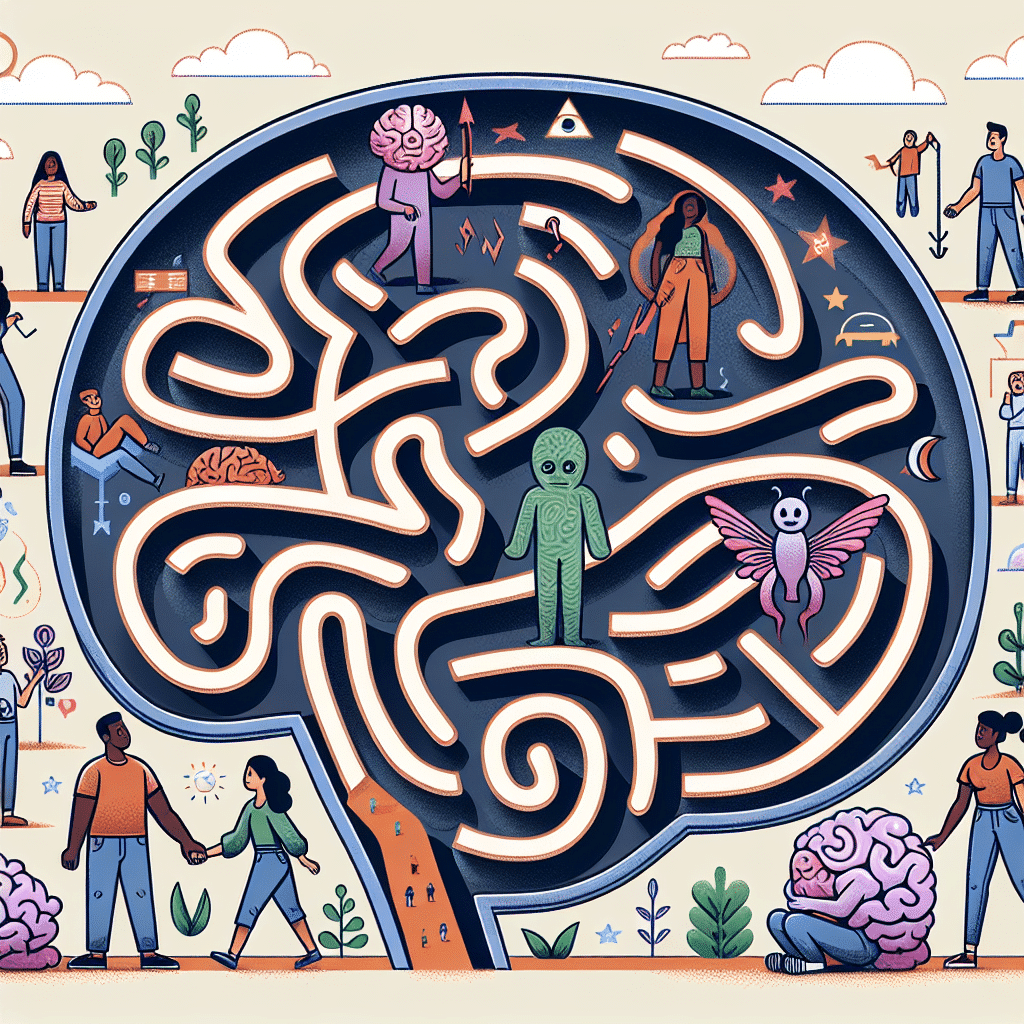
Meditation is a practice that has been around for centuries and has numerous benefits for both the mind and body. Many people find it difficult to incorporate meditation into their daily routine, but integrating it into your lifestyle can have a profound impact on your overall well-being. In this article, we will explore the benefits of integrating meditation into your lifestyle, different types of meditation techniques, how to start a meditation practice, and tips for maintaining consistency.
Benefits of Integrating Meditation in Lifestyle
There are countless benefits to integrating meditation into your lifestyle. Not only does it help reduce stress and anxiety, but it also improves focus, increases self-awareness, and promotes emotional well-being. Regular meditation practice has been shown to have a positive impact on mental health, relieving symptoms of depression and improving overall happiness. It can also improve physical health, reducing blood pressure, improving cardiovascular health, and boosting the immune system.
Furthermore, integrating meditation into your lifestyle can enhance your relationships. By cultivating a sense of calm and compassion through meditation, you can improve your communication skills and develop a greater sense of empathy towards others. This can lead to healthier and more fulfilling relationships with friends, family, and colleagues.
Different Types of Meditation Techniques
There are various types of meditation techniques, each with its own focus and approach. Some popular types include mindfulness meditation, loving-kindness meditation, transcendental meditation, and guided visualization. It is important to explore different techniques to find what resonates with you and aligns with your goals and intentions.
How to Start a Meditation Practice
Starting a meditation practice can seem daunting, but it is actually quite simple. Find a quiet and comfortable place to sit, preferably with minimal distractions. Set a timer for a desired length of time, such as 5 or 10 minutes, and begin by focusing on your breath. Allow thoughts to come and go without judgment, gently returning your attention to your breath whenever you get distracted. As you become more comfortable, you can gradually increase the duration of your meditation sessions.
Tips for Maintaining Consistency in Meditation
Consistency is key when it comes to reaping the benefits of meditation. Here are some tips to help you maintain a regular practice:
- Set a specific time each day for meditation and stick to it.
- Create a dedicated space for meditation, free from distractions.
- Start with shorter sessions and gradually increase the duration over time.
- Find an accountability partner or join a meditation group to stay motivated.
- Experiment with different techniques to keep your practice fresh and engaging.
Integrating Meditation into Daily Life
To integrate meditation into your daily life, you can incorporate mindfulness into everyday activities such as eating, walking, or even doing household chores. Cultivating a habit of present moment awareness can help bring a sense of calm and clarity to your daily experiences. Additionally, you can explore guided meditation apps or classes to further deepen your practice and receive guidance from experienced teachers.
Different Types of Meditation Techniques
There are numerous meditation techniques that you can explore and choose from when integrating meditation into your lifestyle. Each technique has its own unique approach and benefits. Below are some popular types of meditation techniques:
Mindfulness Meditation:
One of the most well-known and widely practiced forms of meditation, mindfulness meditation involves focusing your attention on the present moment. It encourages you to observe your thoughts and emotions without judgment and to simply be aware of them.
Transcendental Meditation:
Transcendental Meditation (TM) is a technique that involves silently repeating a specific mantra, a word or phrase, with the goal of achieving a state of inner calm and relaxation. TM is typically practiced for 15-20 minutes, twice a day.
Loving-Kindness Meditation:
Loving-kindness meditation, also known as Metta meditation, focuses on developing feelings of love, kindness, and compassion towards oneself and others. It involves silently repeating phrases or visualizing sending love and well wishes to different individuals or groups.
Guided Visualization:
In guided visualization meditation, you are guided through visualizations that help create a sense of calm, relaxation, and mental clarity. It often involves imagining peaceful and serene environments or positive outcomes for various aspects of your life.
Body Scan Meditation:
Body scan meditation involves systematically focusing your attention on different parts of your body, from head to toe, and noticing any sensations or feelings without judgment. It helps in building body awareness and promoting relaxation.
Walking Meditation:
As the name suggests, walking meditation involves walking slowly and mindfully, being fully present in the experience of walking. It can be done indoors or outdoors and is a great way to incorporate meditation into your daily movement routine.
These are just a few examples of meditation techniques, and there are many more to explore. The key is to find a technique that resonates with you and fits well into your lifestyle. It’s also important to remember that meditation is a personal practice, and there is no right or wrong way to do it. Experiment with different techniques and approaches to discover what works best for you.
How to Start a Meditation Practice
Starting a meditation practice can seem daunting, especially if you’ve never done it before. However, with a few simple steps, you can easily incorporate meditation into your daily routine:
1. Find a quiet and comfortable space
Choose a spot in your home or outside where you can sit comfortably and won’t be easily distracted. It could be a corner of a room, a peaceful garden, or even a park bench.
2. Set aside time each day
Meditation is a practice that requires consistency. Start by setting aside a specific time each day for your meditation practice. It could be as little as 10 minutes or as long as an hour, depending on your schedule and preferences.
3. Start with short sessions
If you’re new to meditation, it’s best to start with shorter sessions and gradually increase the duration as you become more comfortable. Begin with just a few minutes of meditation and gradually work your way up to longer sessions.
4. Get comfortable
Find a comfortable sitting position that allows you to remain relaxed and alert. You can choose to sit cross-legged on the floor, on a cushion, or on a chair with your feet flat on the ground. The key is to find a position that works for you and doesn’t cause discomfort.
5. Focus on your breath
The breath is a common anchor for meditation. Close your eyes and bring your attention to your breath. Notice the sensation of the breath as it enters and leaves your body. If your mind wanders, gently bring your focus back to your breath without judgment.
6. Start with guided meditations
If you find it challenging to quiet your mind on your own, start with guided meditations. There are numerous apps, websites, and YouTube channels that offer guided meditation sessions for beginners. These can provide structure and guidance as you develop your practice.
7. Be patient and non-judgmental
Meditation is a practice, and like any skill, it takes time to develop. Be patient with yourself and avoid judging your meditation sessions as “good” or “bad.” It’s normal for your mind to wander or for thoughts to arise during meditation. Simply acknowledge them and gently redirect your focus to your breath or chosen point of concentration.
8. Find what works for you
There are many different types of meditation, from mindfulness and loving-kindness to transcendental and guided imagery. Explore different techniques and find what resonates with you. Experiment with different approaches and adapt your practice to fit your needs and preferences.
By following these steps and incorporating meditation into your daily routine, you can experience the many benefits that meditation offers, such as reduced stress, increased focus, and improved overall well-being.

Integrating Meditation into Daily Life
Once you have established a consistent meditation practice, the next step is to integrate it into your daily life. Here are some tips on how to do this:
1. Identify Opportunities
Look for opportunities throughout your day where you can incorporate meditation. This might be during your morning routine, lunch break, or before bed. Identifying specific times in your daily schedule will help you make meditation a habit.
2. Start with Short Sessions
Begin by incorporating short meditation sessions into your day. Just a few minutes at a time can make a significant difference. As you become more comfortable, you can gradually increase the duration of your sessions.
3. Create a Dedicated Space
Designate a specific space in your home where you can meditate. This area should be free from distractions and provide a calm and peaceful environment. Having a dedicated space will make it easier for you to focus and maintain a regular meditation practice.
4. Use Reminders
Set reminders on your phone or use mindfulness apps to prompt you to take a meditation break. These reminders will help you stay consistent and remind you to incorporate meditation into your daily routine.
5. Find Support
Join meditation groups or find a meditation buddy who can support and encourage your practice. Sharing your meditation journey with others can be motivating and help you stay committed.
6. Explore Different Techniques
Experiment with different meditation techniques to find what works best for you. There are various types of meditation, such as mindfulness meditation, mantra meditation, and loving-kindness meditation. Trying different approaches can help you discover the method that resonates with you.
7. Extend Mindfulness Beyond Meditation
Bring the principles of mindfulness into your everyday activities. Practice being fully present during daily tasks such as eating, walking, or washing dishes. This will help you cultivate a sense of mindfulness throughout your day and reinforce the benefits of meditation.
Integrating meditation into your lifestyle requires dedication and persistence. By incorporating these tips into your daily routine, you can make meditation a natural part of your life, reaping the numerous benefits it has to offer.
Integrating Meditation into Daily Life
Integrating meditation into your daily life can greatly enhance your overall well-being and bring a sense of peace and clarity to your mind. Here are some tips on how to seamlessly incorporate meditation into your everyday routine:
Create a Dedicated Space
Having a specific area in your home where you can meditate can help signal to your mind and body that it’s time to relax and focus inward. Find a quiet and comfortable area, free from distractions, where you can sit or lie down comfortably.
Establish a Routine
Consistency is key when it comes to establishing a meditation practice. Choose a specific time of day that works best for you, whether it’s first thing in the morning, during your lunch break, or before bed. By sticking to a regular schedule, you’ll make meditation a habit and ensure that it becomes a natural part of your daily routine.
Start with Short Sessions
When you’re just starting out, it’s important to start with short meditation sessions to build your focus and endurance gradually. Begin with just 5 to 10 minutes of meditation and gradually increase the duration as you become more comfortable and experienced. Remember, it’s more important to have a consistent practice than to meditate for long periods of time.
Practice Mindful Eating
Mindful eating is a great way to incorporate meditation into your daily life, especially during meal times. Take the time to truly savor and appreciate each bite, paying attention to the flavors, textures, and sensations in your mouth. This can not only enhance your eating experience, but also help you develop a greater sense of gratitude and connection with your food.
Use Meditation Apps or Guided Meditations
If you’re finding it difficult to meditate on your own, there are many meditation apps or guided meditations available that can help support and guide you through your practice. These resources offer a variety of meditation styles and lengths, making it easier and more enjoyable to integrate meditation into your daily life.
Integrate Meditation into Daily Activities
Meditation doesn’t have to be limited to sitting in stillness. You can incorporate mindfulness and meditation into your daily activities such as walking, doing household chores, or even while taking a shower. By bringing awareness and presence to these everyday tasks, you can turn them into opportunities for meditation and self-reflection.
By following these tips and integrating meditation into your daily life, you’ll reap the numerous benefits that meditation has to offer and experience a greater sense of peace, clarity, and overall well-being.

Summary
Integrating meditation into one’s lifestyle provides numerous benefits, including reduced stress, improved focus, increased self-awareness, and enhanced emotional well-being. Various meditation techniques can be practiced, such as mindfulness meditation, loving-kindness meditation, and transcendental meditation. To start a meditation practice, individuals should find a quiet and comfortable space, choose a technique that resonates with them, and begin with short sessions before gradually increasing the duration. Consistency is key in maintaining a meditation practice, and tips such as setting a regular schedule, finding accountability partners, and being kind to oneself can help in this regard. Finally, integrating meditation into daily life involves incorporating mindfulness into various activities, finding opportunities for mini-meditation breaks, and incorporating meditation into morning or bedtime routines.






